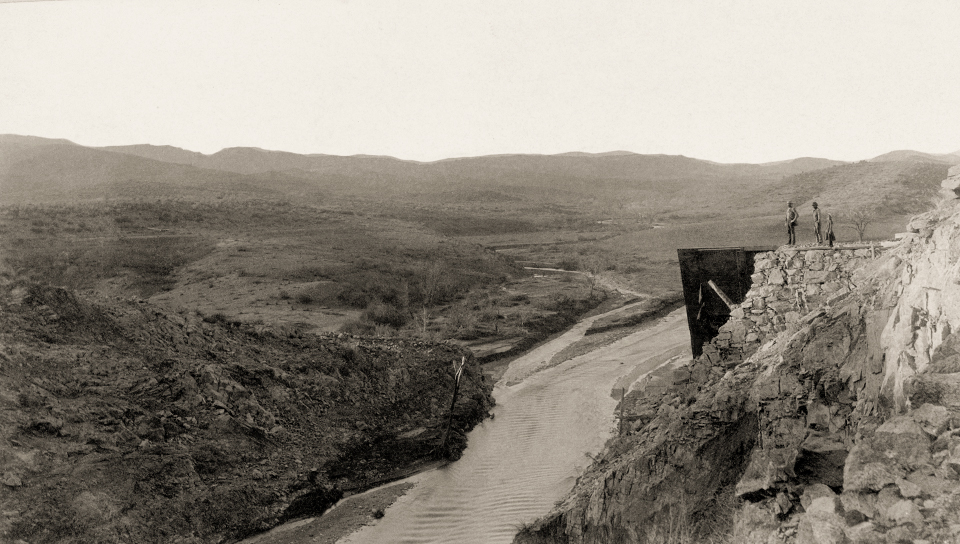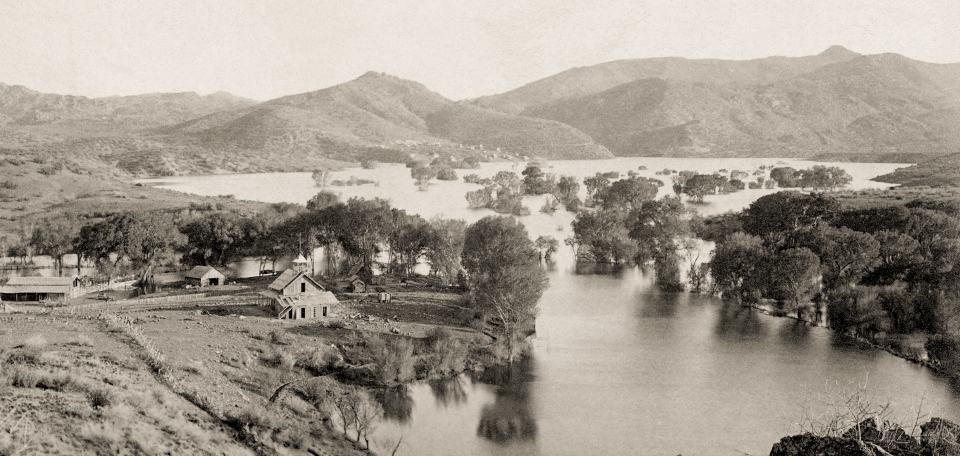
The Unseen Threat: How Arizona’s Forgotten Dam Unleashed a Torrent of Tragedy
The calendar had just flipped to February 1978, but for the quiet communities nestled along the Hassayampa River in Arizona, it marked not a new beginning, but the terrifying end of an unspoken threat. A forgotten sentinel of the desert, the Walnut Grove Dam, a relic of a bygone era, had finally succumbed to the relentless assault of unprecedented rainfall. In a matter of hours, an earthfill structure that had stood for nearly a century as a benign, if neglected, landmark transformed into a weapon of mass destruction, unleashing a colossal wave of water, mud, and debris that would claim lives, obliterate homes, and forever alter the landscape and the state’s approach to dam safety.
The story of the Walnut Grove Dam disaster is not just one of a natural catastrophe, but of human ambition, neglect, and the profound consequences of overlooking latent dangers. It is a stark reminder that even the most seemingly benign structures, left to crumble beyond the gaze of oversight, can harbor the potential for unimaginable devastation.
A Relic of the Gold Rush Era

To understand the Walnut Grove Dam, one must first look back to the late 19th century. Arizona was a land of rugged opportunity, and the Hassayampa River, despite its often-intermittent flow, was a lifeline. In 1886, a consortium of mining interests, eager to secure a reliable water source for their operations and to generate hydroelectric power, embarked on an ambitious project. They would build an earthfill dam across the narrow canyon of the Hassayampa, creating a reservoir capable of holding millions of gallons of water.
The site chosen was about 40 miles north of Wickenburg, near the former mining town of Walnut Grove. The construction itself was a testament to the engineering capabilities of the era, albeit with methods that would be considered rudimentary by modern standards. Workers labored to pile earth, rock, and loose fill, forming a structure approximately 110 feet high and 400 feet long. Upon its completion in 1888, the Walnut Grove Dam was an impressive feat, a symbol of progress in the untamed West. It served its purpose well for a time, providing water and power, fueling the dreams of prospectors and the growth of local communities.
However, like many boom-era projects, its fortunes were inextricably tied to the success of the mines it served. As the veins of gold and silver dwindled, and the economic landscape shifted, the dam’s primary purpose began to wane. By the early 20th century, the mines had played out, and the hydroelectric plant was decommissioned. The dam, no longer economically viable for its original owners, slowly slipped into disuse and, critically, into disrepair. It became an orphan, a massive structure with no clear custodian, no maintenance schedule, and no regulatory oversight.
For decades, the Walnut Grove Dam stood as a silent, increasingly dilapidated landmark. Its earthen walls, once carefully compacted, were left exposed to the elements. Vegetation grew unchecked on its slopes, and the spillway, designed to release excess water safely, was poorly maintained and likely inadequate for major flood events. Local residents knew it was old, perhaps even crumbling, but it had always been there. It was a familiar part of the landscape, a picturesque backdrop for picnics and fishing trips, rather than a harbinger of doom. The very fact of its long existence lulled many into a false sense of security.
The Unseasonable Deluge
The winter of 1978 brought an unusual and relentless pattern of weather to Arizona. Typically a dry state, the region experienced a series of powerful Pacific storms that dumped unprecedented amounts of rain. January had been wet, but February brought a new level of intensity. For days, the skies opened, unleashing monsoon-like downpours across the already saturated landscape. The Hassayampa River, usually a gentle trickle or a dry wash for much of the year, began to swell into a raging torrent.
The old Walnut Grove Dam, never designed for such an onslaught, began to fill rapidly. The reservoir, accustomed to holding a steady volume, swelled beyond its historical capacity. The poorly maintained spillway struggled to cope, and the earthen structure, weakened by decades of neglect, began to show signs of distress. Witnesses who saw the dam in the days leading up to the breach reported water flowing over the crest, a clear indication that the structure was overwhelmed. The ground beneath its foundations was saturated, turning the earth into a heavy, unstable mass.
Then, in the late hours of February 22nd, or the early morning of February 23rd, 1978, the inevitable happened. With a roar that witnesses would later describe as an earthquake or a freight train, the Walnut Grove Dam failed catastrophically. The exact moment and precise mechanism are debated, but the consensus is that the sheer volume and pressure of the water, combined with the structural integrity compromised by age and neglect, caused a section of the earthen embankment to simply give way.

The Deluge’s Fury
What followed was a nightmare of unimaginable speed and power. Millions of gallons of water, held back for nearly a century, were unleashed in an instant. A wall of water, estimated to be between 10 and 20 feet high, ripped through the canyon, sweeping away everything in its path. This wasn’t just water; it was a churning, roiling mass of mud, trees, rocks, and the shattered remnants of the dam itself. The flood wave moved at an astonishing pace, estimated by some to be as fast as 30 to 40 miles per hour, leaving little to no time for those downstream to react.
The Hassayampa River valley, home to a scattering of homes, businesses, and recreational campsites, was utterly unprepared. Many of the victims were campers, caught unaware in their sleep near the riverbanks. Others lived in isolated residences, far from any immediate warning. "There was no warning," recounted one survivor, whose home was swept away. "Just a sound, and then it was on us."
The destruction was absolute. Homes were not merely damaged; they were pulverized, reduced to splintered debris and carried miles downstream. Bridges, designed to withstand the river’s typical flow, buckled and collapsed under the immense force. Cars, trucks, and RVs were tossed about like toys. The flood carved new channels, scoured the landscape bare, and deposited a thick layer of mud and wreckage across what had once been farms and fields.
The official death toll eventually settled at 14 lives lost, though the exact number was difficult to ascertain given the ferocity of the flood and the remote nature of some of the affected areas. Bodies were found miles from where they had been last seen, some never recovered. The tragedy was compounded by the fact that many of these deaths were entirely preventable.
The Lingering Aftermath and the Reckoning
As dawn broke on February 23rd, the true scale of the disaster became horrifyingly clear. What remained was a scene of utter desolation – a lunar landscape of mud, tangled metal, splintered wood, and the deep, raw scar where the dam had once stood. Rescue efforts were immediate but challenging. The transformed landscape made access difficult, and the sheer volume of debris complicated the search for survivors and victims. Emergency crews, local volunteers, and military personnel worked tirelessly, navigating treacherous conditions.
The Walnut Grove Dam disaster sent shockwaves across Arizona and beyond. How could such a thing happen? Why was an old, dilapidated dam allowed to exist, holding back such a vast amount of water, without any oversight? The questions quickly turned to outrage, and then to a demand for answers and accountability.
The ensuing investigations laid bare a critical regulatory vacuum. Because the Walnut Grove Dam had been built before the state had any comprehensive dam safety laws, and because it was technically "abandoned" by its original owners, it fell through the cracks. There was no state agency responsible for inspecting it, no requirement for maintenance, and no clear chain of ownership or liability. Yavapai County, in which the dam was located, had tried in the past to address its deteriorating condition, but with no clear legal authority to intervene on private property, their efforts had been largely futile.
The tragedy served as a brutal, undeniable wake-up call. The state of Arizona, previously lacking robust dam safety legislation, moved quickly to rectify the oversight. In 1978, in direct response to the Walnut Grove Dam disaster, the Arizona Dam Safety Act was enacted. This landmark legislation established a comprehensive framework for the inspection, classification, and regulation of all dams in the state, regardless of age or ownership. It mandated regular inspections, required emergency action plans, and provided the state with the authority to order repairs or even the removal of unsafe structures. It was a crucial step towards ensuring that such a preventable disaster would never happen again.
A Legacy Forged in Water
Today, the site of the Walnut Grove Dam remains a quiet, stark reminder of the tragedy. The canyon is now a natural wash, the Hassayampa River flowing freely through the breach that once held back millions of gallons of water. No new dam was ever built in its place. The scars on the landscape are still visible, but they are slowly being reclaimed by the desert.
The legacy of the Walnut Grove Dam disaster extends far beyond the physical site. It is etched into Arizona’s regulatory framework and serves as a potent, if tragic, lesson in the importance of infrastructure oversight. It highlights the often-invisible dangers lurking in aging infrastructure, particularly when accountability is ambiguous. The lives lost that February night were a terrible price to pay, but their memory endures as a catalyst for change, ensuring that the safety of communities downstream from dams is never again left to chance or forgotten in the annals of history. The Walnut Grove Dam disaster stands as a testament to nature’s power, human fallibility, and the enduring human capacity to learn from catastrophe to prevent future heartbreak.


